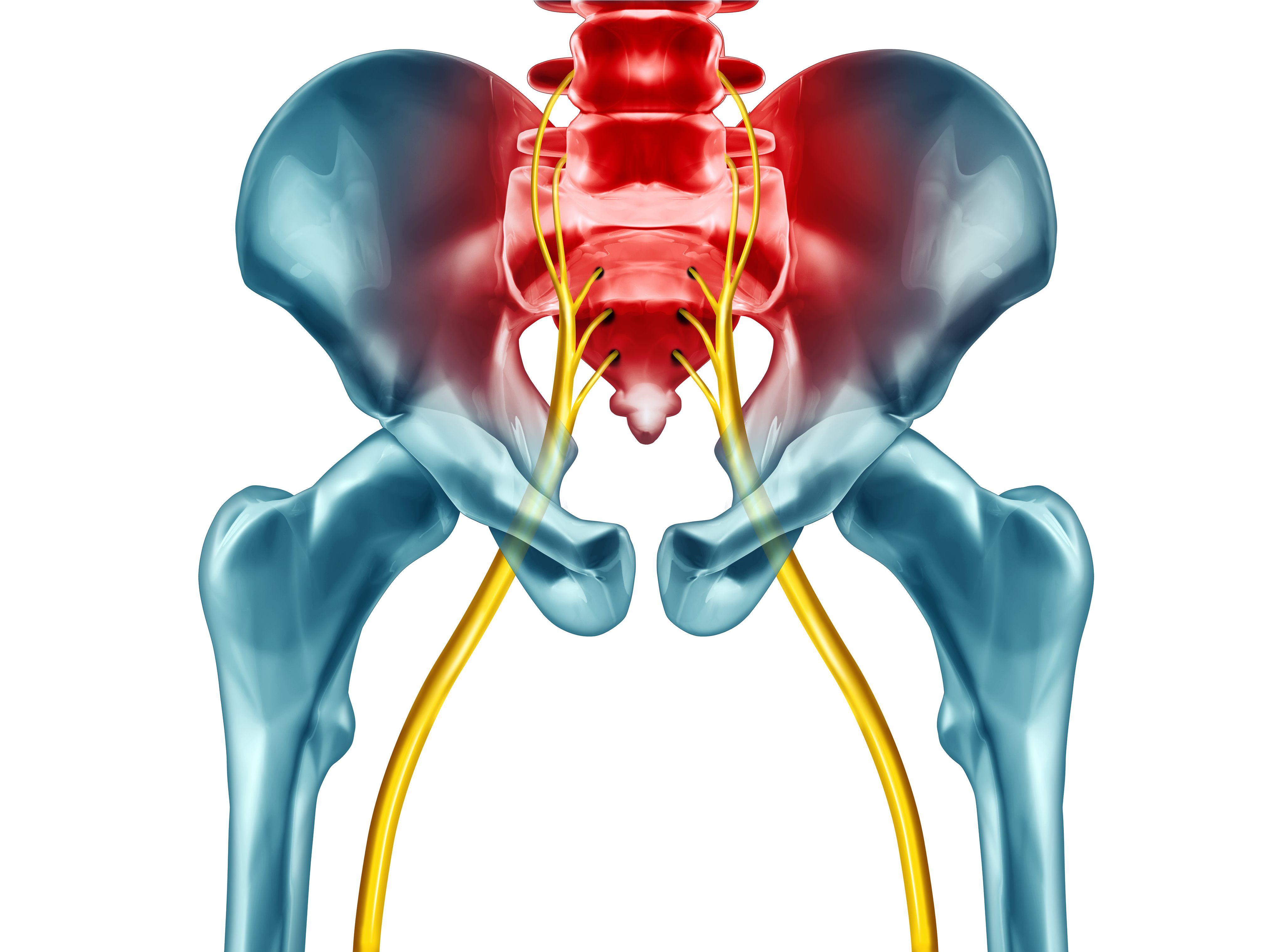The sciatic nerve is the longest and largest nerve in the human body. Just like the spinal cord, it is approximately the width of a human finger. The sciatic nerve is made up of a combination of spinal nerves, namely L4, L5, S1, S2 and S3, and forms on the right and left side of the lower lumbar spine.
The sciatic nerve travels down the lower back, through the hip and into the buttock and leg. At the knee the sciatic nerve splits into two, becoming the tibial nerve and the common peroneal nerve, both of which travel down to the lower leg and foot.
The sciatic nerve directly innervates the muscles of the posterior thigh and hamstrings and indirectly innervates all the other muscles of the leg and foot via its terminal branches, the tibial nerve and common peroneal nerve.
Whilst the sciatic nerve does not have any direct sensory function, it does provide indirect sensory innervation via its terminal branches as shown in the diagram to the right.
Causes of Sciatica
Sciatica is caused by irritation of the nerve roots in the lower lumbar spine.
One of the most common causes of this irritation is herniated and bulging discs. The herniated disc compresses one of the five spinal nerves that make up the sciatic nerve and this leads to varying degrees of symptoms in the lower lumbar spine and down the leg in the distribution of the sciatic nerve.
Another common cause of sciatica is spinal stenosis. This occurs when the spinal canal narrows, compressing or restricting the spinal nerve roots in the spine. This is often associated with degenerative changes in the spine that occur with age.
Less common causes of sciatica include piriformis syndrome which is a condition that is believed to result from compression of the sciatic nerve around the piriformis muscle, and ankylosing spondylitis which is a kind of arthritis that affects the joints and ligaments of the spine. ‘Ankylosing’ means stiff and ‘spondylo’ means vertebra.
Symptoms
Sciatica is a symptom and not a diagnosis. Sciatica is the term used to describe pain or other symptoms including burning, pins and needles, numbness, tingling and weakness along the distribution of the sciatic nerve from the lower back to the foot.
Sciatica generally only affects one side and varies in intensity from mild symptoms to disabling pain.
Treatment
In general, you can help relieve back pain and sciatica by staying active, using pain killers and doing special stretches and exercises. Physiotherapy may also be helpful, and surgery may be recommended for people with ongoing problems.
Specialists
Neurologists and neurosurgeons are not the only experts in this field. Orthopaedic surgeons have a deep level of understanding of the spinal nerves which is necessary for them to assess, diagnose and treat spinal injuries.
You can read our article in full below :

